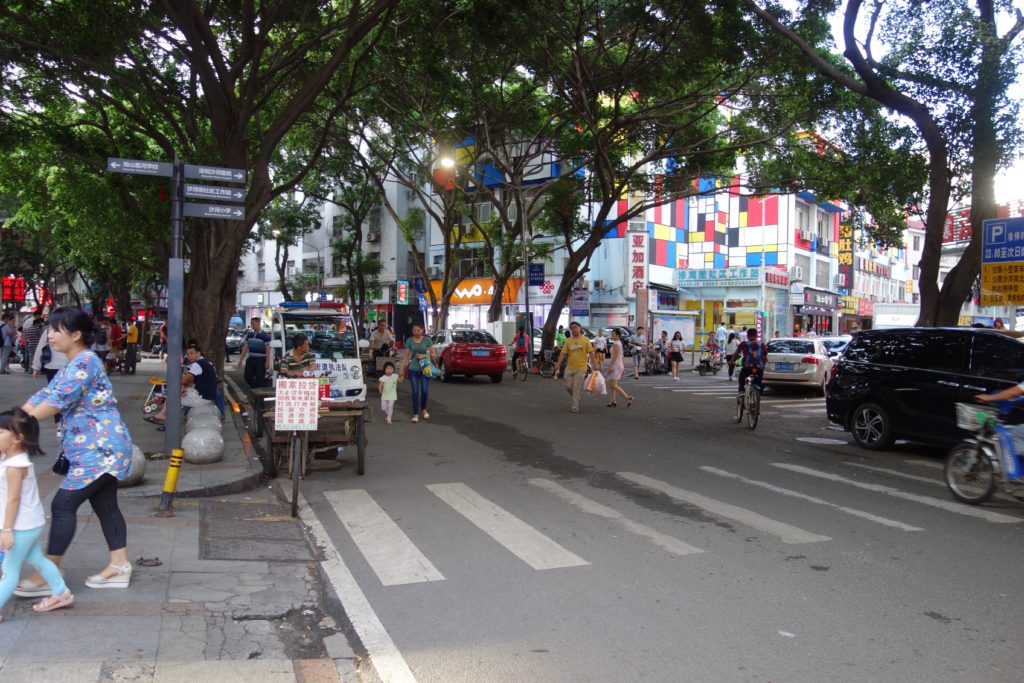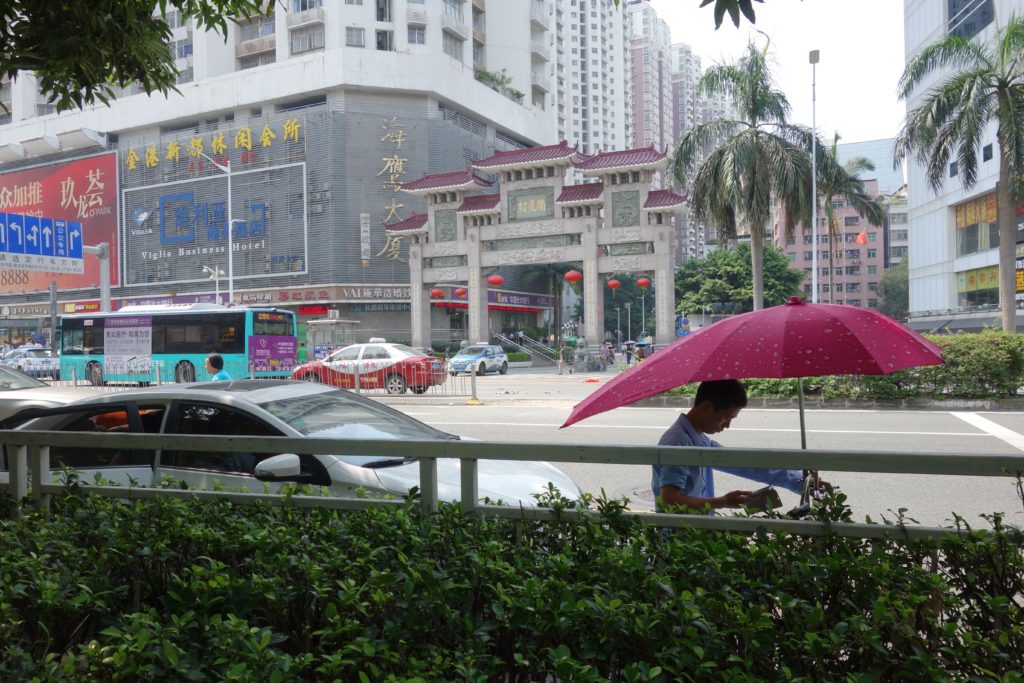By BAILEY BAERWOLF, 7/27/2016. At this point in our trip, we’re truly starting to understand Shenzhen beyond the preliminary research we conducted before arriving—although I find it hard to believe that anyone could ever fully comprehend the nuances of daily life in a city of this size. I guess it’s less that we’re understanding the city and more so just finally putting an experience to what we’ve read, especially with regards to the duality between the urban villages and the city ‘proper.’ Our main takeaway thus far is that the villages offer a very different form of urban life than what the city officials or developers have to offer—and at a much cheaper price. The villages are often vibrant and bustling areas of the city, whereas many of the planned neighborhoods we’ve been to have offered a generic, boring city experience (the kind we see popping up in urban areas all over the world: desolate concrete plazas designed with sporadic ‘green space,’ streets made for driving rather than walking, etc.). The urban villages also embody a greater spirit of “the right to the city.” With that being said, however, the informal areas of Shenzhen are often quite filthy and overcrowded and pose major health and safety hazards (i.e. fire hazards with electrical wiring, close proximity of handshakes could be unsafe, the conditions for food preparation are seriously dangerous, etc.). What we’re learning above all else is that everything is up for discussion and that we’re quite truly unbiased towards either form of Shenzhen urbanism.
We have now visited five very unique urban villages—Old Hubei Village, Baishizhou, Gangxia, Wutongshan and Dalang. All but Wutongshan were independent adventures—on that day we joined Mary Ann O’Donnell’s husband, Yang, and his friends in examining the artistic haven that this mountain community has become. In addition, after seeing Baishizhou a few times for ourselves, we were guided through the area by a few members of Handshake 302, a grassroots organization bringing to light issues of Shenzhen development through art and design practices. *Side note: besides creating our own video compilation of our journey, Jordenn and I have also decided to share our video footage with Mary Ann O’Donnell and the other members of Handshake 302 to be included in their ongoing Crowdsourced Documentary of Baishizhou project.
Of them all, the two urban villages I have found most interesting were Baishizhou and Gangxia. We focused much of our video work on these areas because, unlike the main plazas of Shenzhen’s newer developments, the energy in these spaces commanded us to keep shooting. I rarely desire to even take a single still photograph in some parts of the city—a subconscious decision we have since been very observant towards.
For some insight into these two areas, here are some word pairings to describe their notable differences, along with a fascinating photo juxtaposition of their respective entrances:
| Baishizhou | Gangxia |
| Larger | Cleaner |
| Chaotic | Busy |
| Energy | Rhythm |
| Laissez-faire | Orderly |
| No-collar | White-collar |
| Moving onward | Moving upward |
| Ultra-dense | Super-dense |


